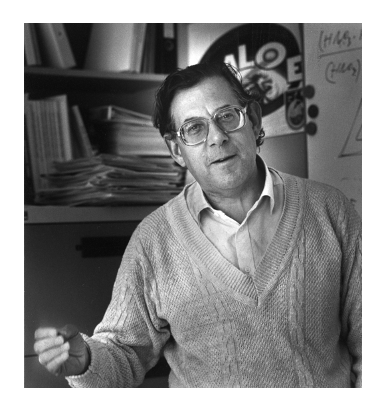Obituary for the Nobel Laureate Paul Josef Crutzen (1933–2021)
- Jan 29, 2021
- Institute News
- Dept. I
- Gregor Lax
The MPIWG was saddened to hear the news of the death of Paul Josef Crutzen, who passed away on January 28, 2021 at the age of 87. Crutzen had a lasting impact on atmospheric and Earth system research through his groundbreaking work on the significance of anthropogenic influences on the atmosphere and climate. His academic career took the Dutch-born scientist from the renowned Meteorological Institute of Stockholm University (MISU) to the Universities of Oxford and Chicago, the Scripps Institution of Oceanography (affiliated with the University of California), the National Center for Atmospheric Research (NCAR) in Boulder (Colorado), and finally to the MPI for Chemistry in Mainz as Director. There he headed the Department of Atmospheric Chemistry from 1980 onwards for over two decades and played a decisive role in shaping the overall Earth system profile of the Max Planck Society.
 He entered the—at that time new—field of atmospheric chemistry in the early 1970s with pioneering work on the significance of trace gases occurring in minute quantities in the atmosphere, which had been greatly underestimated by international research. These included first and foremost nitrogen oxides (NOx), which can have a fatal effect on the stratospheric ozone layer. This finding contributed significantly to discussions around exclusively anthropogenic chlorofluorocarbons (CFC), triggered by Frank Sherwood Rowland and Mario Molina in 1974 with studies based on Crutzen's work. When fears of global stratospheric ozone depletion by these compounds were confirmed with the 1985 discovery of the hole in the ozone layer, Crutzen—by then director at the MPI for Chemistry—together with the physicist Frank Arnold at the MPI for Nuclear Physics in Heidelberg provided an explanation for the phenomenon's emergence that remains valid today. In 1995 Crutzen, Molina, and Rowland jointly received the only Nobel Prize in Chemistry to have been awarded explicitly for research on the atmosphere.
He entered the—at that time new—field of atmospheric chemistry in the early 1970s with pioneering work on the significance of trace gases occurring in minute quantities in the atmosphere, which had been greatly underestimated by international research. These included first and foremost nitrogen oxides (NOx), which can have a fatal effect on the stratospheric ozone layer. This finding contributed significantly to discussions around exclusively anthropogenic chlorofluorocarbons (CFC), triggered by Frank Sherwood Rowland and Mario Molina in 1974 with studies based on Crutzen's work. When fears of global stratospheric ozone depletion by these compounds were confirmed with the 1985 discovery of the hole in the ozone layer, Crutzen—by then director at the MPI for Chemistry—together with the physicist Frank Arnold at the MPI for Nuclear Physics in Heidelberg provided an explanation for the phenomenon's emergence that remains valid today. In 1995 Crutzen, Molina, and Rowland jointly received the only Nobel Prize in Chemistry to have been awarded explicitly for research on the atmosphere.
During his time as director in Mainz, and in the years that followed, Crutzen was in many ways an innovative driving force for the international research community. Often his approaches and ideas developed their own strong momentum in larger contexts. These included the computer simulation developed together with John Birks that informed the initial debate on the concept of the "nuclear winter" that followed a nuclear exchange by bloc powers, which he retrospectively described some decades later as "perhaps the most important idea I ever had." As with Crutzen's work on CFCs, responses to this research were considerable and led to numerous follow-up studies conducted at institutions around the world.
In his final year in office, Crutzen introduced the concept of the Anthropocene as a possible new Earth age in which humans are the decisive factor in climate change. The idea proved to be viable and gave rise to new branches of research not only in the natural sciences but also in the humanities and social sciences. It is impossible to imagine today's environmental debates without the Anthropocene concept. Crutzen himself saw the anthropogenic influence on the Earth system over the past 200 years to be so serious that in 2006 he initiated a discussion on the topic of geoengineering. This in turn raised the question of whether and to what extent the Earth system might be deliberately changed by humans to mitigate damage using scientific approaches. Although initially only intended as a "trial balloon," the topic aroused considerable protest and emotion. Since then a broad scientific debate has developed that is also followed by high-ranking political authorities, including at federal ministerial level.
With the passing of Paul Crutzen the MPG has lost one of its particularly charismatic scientific members, and Earth system research as a whole has lost one of its best-known pioneers and instigators over the past 50 years.
Obituary by Gregor Lax
